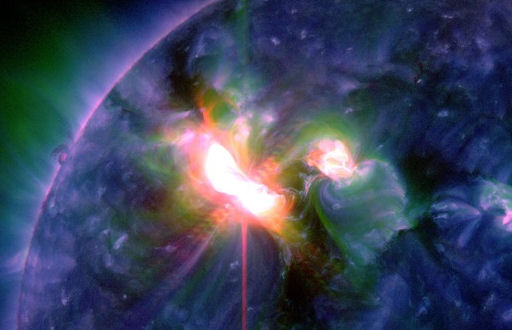The biggest space weather storm in five years is heading towards Earth and could disrupt power grids, GPS systems, satellites and airline flights, Nasa has warned.
In a statement on its website, the US space agency said the storm was caused by two solar flares that erupted on Sunday. Following the flares, two bursts of solar wind and plasma – known as a coronal mass ejection (CME) – were thrust towards Earth. This eruption hurled a bright CME into space, shown here in a movie from the Solar and Heliospheric Observatory
“The first is traveling faster than 1,300 miles per second; the second more than 1,100 miles per second,” the statement added.
The brunt of the storm is expected to last until Friday.
Astronauts aboard the International Space Station could also be affected by the radiation storm, which may cause them to seek shelter in better protected parts of the orbiting lab as they have in the past.
“Flight surgeons in Houston’s mission control centre have been monitoring the solar activity and will continue to do so,” Nasa spokesman Mike Curie said.
“They have determined that there presently is no concern for the six crew members aboard the International Space Station.”
Space storms are not new. The first major solar flare was recorded by British astronomer Richard Carrington in 1859.
Other solar geomagnetic storms have been observed in recent decades. One huge solar flare in 1972 cut off long-distance telephone communication in the US state of Illinois.

